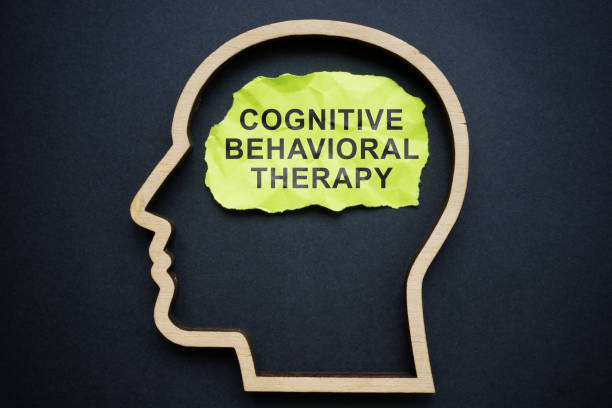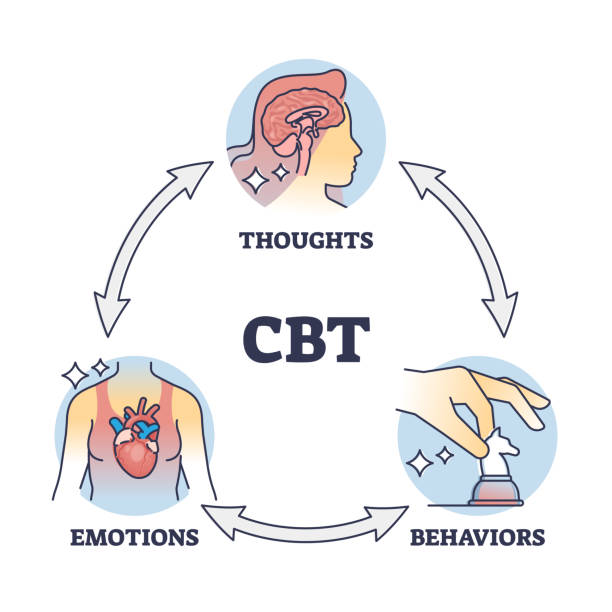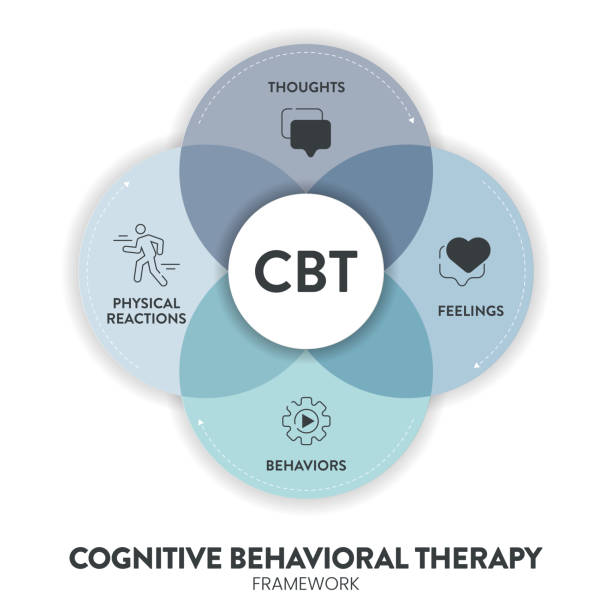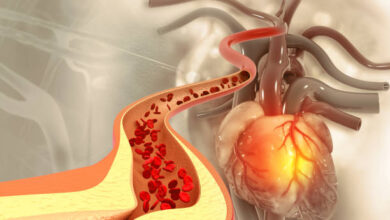Cognitive Behavioral Therapy (CBT): A Comprehensive Guide
Cognitive Behavioral Therapy (CBT): A Comprehensive Guide

Cognitive Behavioral Therapy (CBT) is a widely recognized and effective treatment modality for a variety of psychological disorders. Its practical, hands-on approach has proven to be beneficial for individuals struggling with depression, anxiety, phobias, stress, and more. In this comprehensive guide, we will delve into the intricacies of CBT, exploring its principles, methodologies, applications, and the research supporting its efficacy.
cognitive behavioral therapy definition?
cognitive behavioral therapy (CBT) is a form of psychological treatment that focuses on examining the relationships between thoughts, feelings, and behaviors. It’s based on the idea that our thoughts influence our emotions and actions, and that by identifying and addressing unhelpful or inaccurate thinking, we can change our emotional responses and behaviors to be more positive and productive.
- Identification of Negative Thought Patterns: CBT helps individuals identify patterns of thinking that are distorted, unhelpful, or unrealistic, which often contribute to emotional distress and problematic behaviors.
- Challenging and Changing Cognitive Distortions: Once these patterns are identified, CBT teaches individuals to challenge and reframe their thoughts in a more positive or realistic manner.
- Behavioral Interventions: CBT often involves behavioral techniques, such as exposure therapy for anxiety or activity scheduling for depression, to change behaviors that are contributing to a person’s problems.
- Skill Development: It equips individuals with coping skills and strategies to handle difficult situations, reduce stress, and manage emotional responses more effectively.
- Problem-Solving: CBT encourages the development of problem-solving skills to deal with life’s challenges in a more adaptive way.
- Goal Setting: Therapy is focused on achieving specific goals that the individual and therapist set together, making it a collaborative process.
CBT is evidence-based and has been proven effective for treating a variety of mental health issues, including anxiety, depression, phobias, and stress, among others. It is one of the most widely used and well-supported forms of psychotherapy in the mental health field.

cognitive behavioral therapy methods
CBT is grounded in several key principles:
- Interconnectedness of Thoughts, Feelings, and Behaviors: CBT posits that our thoughts, emotions, and actions are tightly interwoven and influence each other.
- Awareness and Identification: The therapy begins with the identification of negative thought patterns and behaviors that contribute to emotional distress.
- Challenge and Modification: Once these patterns are identified, CBT works to challenge and modify them, replacing negative thoughts with more realistic and positive ones.
- Behavioral Activation: CBT often incorporates behavioral techniques, encouraging individuals to engage in positive activities that can improve mood and alter behavior.
- Skill Development: CBT emphasizes the development of coping strategies and problem-solving skills, empowering individuals to handle future challenges effectively.
The CBT Process
The Cognitive Behavioral Therapy (CBT) process is a structured and systematic approach that involves several key steps. These steps are designed to help individuals identify, understand, and change their negative thought patterns and behaviors. Here’s an overview of the typical CBT process:
1. Assessment and Introduction
- Initial Assessment: The therapist conducts an initial assessment to understand the individual’s history, current issues, and goals for therapy. This includes discussing the person’s symptoms, problems, life circumstances, and what they hope to achieve through CBT.
- Building Rapport: Establishing a trusting and collaborative relationship between the therapist and the client is crucial for effective therapy.
- Education: The therapist explains the CBT model, how it works, and what the client can expect during the process. This helps demystify therapy and sets the stage for active participation.
2. Identification of Problems
- Problem-Specific: The therapist and client work together to identify specific problems or areas of concern. These are often broken down into smaller, manageable parts.
- Setting Goals: Together, they set clear, achievable goals for therapy. These goals are usually specific, measurable, achievable, relevant, and time-bound (SMART).
3. Identification and Exploration of Thoughts, Emotions, and Behaviors
- Connection Between Thoughts, Emotions, and Behaviors: Clients learn to recognize the interconnection between their thoughts, feelings, and actions.
- Self-Monitoring: Clients may be asked to keep track of their thoughts, emotions, and behaviors in certain situations to identify patterns and triggers.
4. Cognitive Restructuring
- Identifying Negative Thoughts: Clients learn to identify automatic negative thoughts that contribute to emotional distress.
- Challenging Negative Thoughts: The therapist helps the client to challenge these thoughts by examining evidence for and against them, considering alternative viewpoints, and testing out new interpretations.
- Replacing Negative Thoughts: Clients learn to replace distorted or unhelpful thoughts with more accurate and constructive ones.
5. Behavioral Interventions
- Behavioral Experiments: Clients test their beliefs through behavioral experiments, which can challenge their thoughts and beliefs in real-world scenarios.
- Exposure Therapy: Particularly for anxiety, this involves gradual, controlled exposure to feared situations to reduce fear and avoidance behaviors.
- Skill Development: Clients learn new coping skills, such as problem-solving, relaxation techniques, and assertiveness training.
6. Consolidation and Relapse Prevention
- Applying Skills: Clients are encouraged to apply their new skills and ways of thinking to various situations in their lives, consolidating their learning and changes.
- Relapse Prevention: The therapist and client develop strategies to maintain progress and address potential future challenges, helping the client to prevent relapse after therapy ends.
7. Evaluation and Termination
- Evaluating Progress: Together, the therapist and client evaluate the progress made towards the client’s goals.
- Termination: Once the client has achieved their therapy goals, the process concludes. The termination phase includes reviewing the skills learned, planning for the future, and ensuring the client feels equipped to handle challenges independently.

Throughout the CBT process, the therapist acts as a guide and collaborator, helping the client to develop the tools they need to address their cognitive and behavioral patterns effectively. The ultimate goal is to empower the client to become their own therapist, maintaining their gains and applying their new skills throughout their life.
Applications of CBT
Cognitive Behavioral Therapy (CBT) is a versatile and widely used form of psychotherapy that has been effectively applied to a range of psychological issues. Its adaptability allows it to be tailored to the specific needs of individuals, making it a preferred choice for many mental health professionals. Here’s an overview of the various applications of CBT:
1. cognitive behavioral therapy for depression
CBT is highly effective in treating depression. It helps individuals identify and challenge negative thought patterns and behaviors that contribute to their depressive symptoms. By replacing these thoughts with more positive and realistic ones, individuals can alleviate their depressive symptoms and improve their mood.
2. cognitive behavioral therapy for anxiety
CBT is considered a first-line treatment for various anxiety disorders, including generalized anxiety disorder, panic disorder, social anxiety disorder, and phobias. It teaches individuals to confront their fears in a controlled and gradual manner, reducing avoidance behaviors. CBT also helps in developing coping strategies to manage anxiety symptoms effectively.
3. Obsessive-Compulsive Disorder (OCD)
CBT, particularly a subtype called Exposure and Response Prevention (ERP), is effective for OCD.
4. cognitive behavioral therapy for (PTSD)
CBT can help individuals with PTSD by enabling them to process and make sense of their traumatic experiences. Techniques like cognitive restructuring and exposure therapy are used to address intrusive memories and reduce avoidance behaviors.
5. Eating Disorders
CBT is used to address the distorted thoughts and behaviors associated with eating disorders like anorexia nervosa and bulimia nervosa. It helps individuals develop healthier eating habits, improve their body image, and address underlying cognitive distortions related to food and self-worth.
6. Substance Abuse and Addiction
CBT assists individuals in understanding the triggers of substance abuse, developing coping strategies to deal with cravings, and learning to challenge thoughts that contribute to substance use. It’s an integral part of many addiction treatment programs.
7. Insomnia
CBT for insomnia (CBT-I) is a structured program that helps individuals identify and replace thoughts and behaviors that cause or worsen sleep problems with habits that promote sound sleep.
8. Anger Management
CBT helps individuals recognize the triggers of their anger, understand their responses, and develop healthier ways of expressing anger. It teaches skills to manage triggering situations proactively and reactively.
9. Chronic Pain
CBT for chronic pain involves changing the patient’s attitudes and beliefs about their pain, teaching them coping strategies, and helping them to manage stress and improve their quality of life despite persistent pain.
10. Relationship and Marital Issues
CBT can be applied to improve communication skills, resolve conflicts, and build healthier relationships. It helps individuals change patterns of thinking and behavior that negatively impact relationships.
11. Stress Management
CBT provides tools for better stress management by helping individuals identify and change the thought patterns that contribute to their stress, as well as developing effective coping strategies.
By addressing the specific thought patterns and behaviors that contribute to each of these issues, CBT helps individuals make significant and lasting changes, improving their mental health and overall quality of life.
The Efficacy of CBT
Research has consistently shown that CBT is an effective treatment for various psychological issues. It is often considered the gold standard in psychotherapy. With numerous studies demonstrating its efficacy in improving symptoms of depression, anxiety, and other disorders. Moreover, the skills acquired during CBT have long-lasting benefits, helping individuals to maintain their gains over time.
Conclusion
Cognitive Behavioral Therapy is a comprehensive, evidence-based approach that offers a practical solution to those struggling with psychological issues. Its focus on altering thought patterns and behaviors provides individuals with the tools they need to effect lasting change in their lives. Whether dealing with anxiety, depression, or other challenges, CBT offers a structured path toward recovery and well-being.
In embracing the principles of CBT, individuals gain the power to reshape their thoughts. Influence their emotions, and alter their behaviors, paving the way for a healthier, more fulfilling life.





